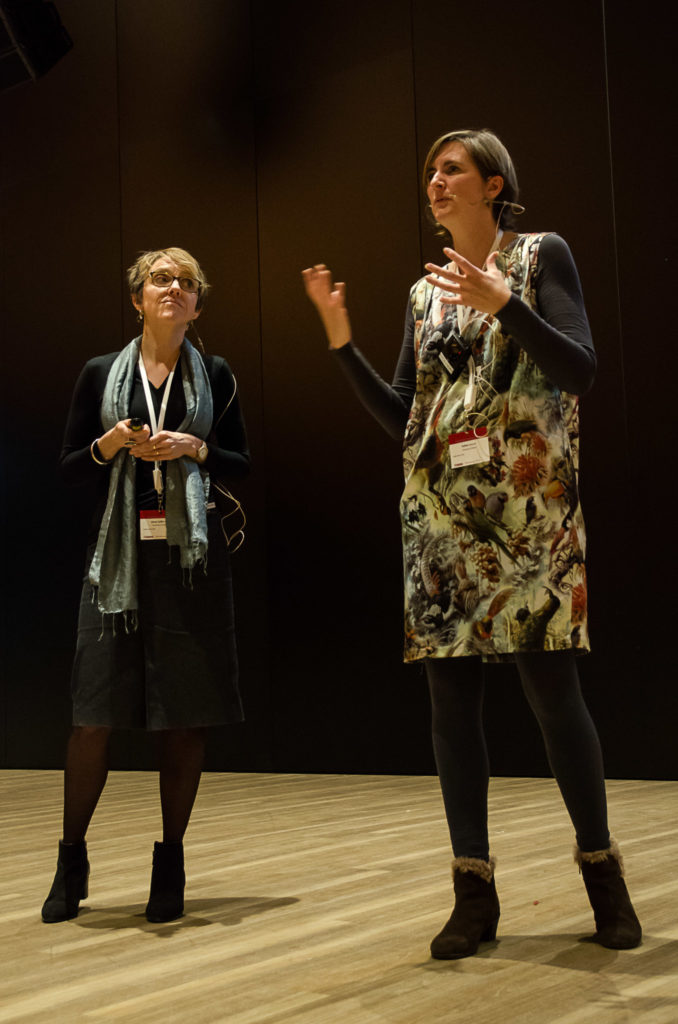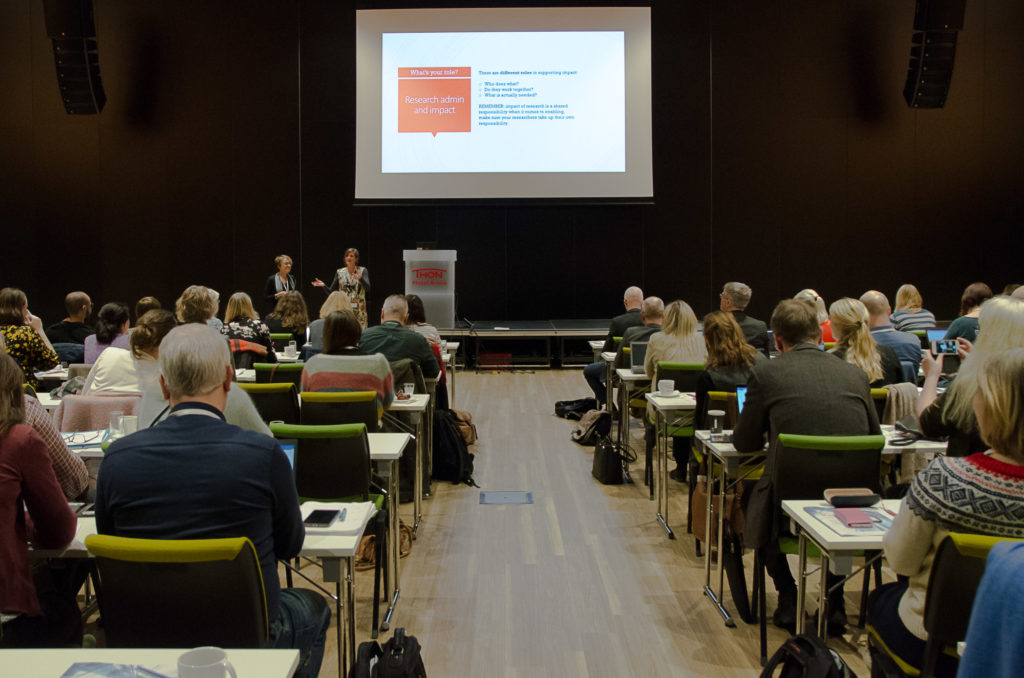During the afternoon at the 8th NARMA conference five parallel sessions were organized. All the participant had to choose between either:
-Impact writing – in Research Council calls and to the public
-Perspektiver på EU-finansiering – fra Horizon Europe til prosjektadministrasjon i H2020
-Personvern og databehandleravtaler
-The Changing World of Research Evaluation – Ensuring our evaluation practices are fit for purpose
-Forskerutdanning: Samarbeid nasjonalt og internasjonalt i ph.d.-utdanningen. Dobbel- og fellesgrader, finansiering av utenlandsopphold.
Parallel session one: Impact writing – in Research Council calls and to the public
The session on impact writing aimed at covering three topics:
a) The Research Council’s position on promoting societal impacts in public funding of research and innovation.
b) how should researchers describe expected societal impacts in project descriptions and the Research Councils application form?
c) how the Research Council will work with their expert panels when these will assess and score the project’s potential “societal impacts”
And answering the question on:
How can research administrators collaborate across administrative fields and work with researchers to motivate, promote, identify and describe impact
The speakers in this session was:
- Esther De Smet, Senior Research Policy Advisor, Ghent University, Belgium
- Anne-Sofie Lægran, Head of Knowledge Exchange and Impact, University of Edinburgh, UK
- Rune Rambæk Schjølberg, Special Advisor, Research Council of Norway
- Stig Slipersæter, Special Advisor, Research Council of Norway
Experiences from Belgium and the UK
Both De Smet and Lægran participated in the opening meeting, but during the parallel session they got time to provide more detailed information about how to support researchers on impact.
Their main question was: How can research administrators collaborate across administrative fields and work with researchers to motivate, promote, identity and describe impact?
Using the Slido-tool De Smet and Lægran started out asking the participants a very relevant question: How much do you know about impact and supporting impact?
The majority of the participants replied that they know some, but they are not sure where to start, and some answered they know enough to manage.
However, impact is a challenging topic to provide support on according to De Smet and Lægran. There does not exist a one size fits all check-list, and impacts may be big or small, instrumental (direct change) or conceptual.
The important thing for administration that advise researchers is to know what impact actually is and is not. De Smet underlined two important points:
- Use the terminology that resonates the best with your researchers
- Distinguish between the process or pathway and the result/effect itself, because it is two different things.

Anne-Sofie Lægran, Head of Knowledge Exchange and Impact, University of Edinburgh, UK & Esther De Smet, Senior Research Policy Advisor, Ghent University, Belgium
Not a linear process
De Smet shared her experiences from the Ghent University in Belgium where the emphasis is on the pathways rather than the impact of individual researchers or projects.
– Impact is often the result of the work of a group, of a body of knowledge. It is important to acknowledge this and not put more pressure on the researcher as an individual, even though it is important that researchers take ownership while planning and doing their impact activities, said De Smet.
Lægran emphasized the importance of starting with the problem you want to address, then identify what impact may look like and work backwards from there.
– If we address the problem of maternity health in Uganda, what may impact look like, and who do we need to involve to achieve this? Asked Lægran.
However, developing a research project is not a linear process
De Smet warns that the process can be a leaking pipeline, so it is important to both be clear on the main purpose of the project, but at the same time be open for creativity, and opportunities. It can be hard when you have a strict timeline, but the baseline here is that the process is not linear.
How do you see your role in supporting impact?
This was another question that De Smet and Lægran asked the participants through the Slido-tool, and the answers where many: Information, guidance, babysitting, asking questions, translating, brainstorming, inspiring, facilitation and seeing the bigger picture.
One thing that De Smet added in the rounds of questions is to recognize that pressure on researchers can take away the inspiration to actually do their job.
– We have researchers that struggle with the pressures of academia, with mental wellbeing. We have to go back to the basics; this is about making a difference, this is an opportunity to get the research and researchers back on track. We must guide our researchers with empathy, because impact is about people who work together.
De Smet and Lægran finishing with sharing links to common tools. The idea is to share: the main message: you can make them impact literate, once there is a specific proposal you have to write, make sure that it works for what you are expecting, the same broad idea of impact:
Accomplissh Guide to impact planning:
https://www.accomplissh.eu/publications-and-deliverables
REF 2014 impact case studies:
Https://impact.ref.ac.uk/casestudies/
FastTrack impact resources:
https://www.fasttrackimpact.com/
